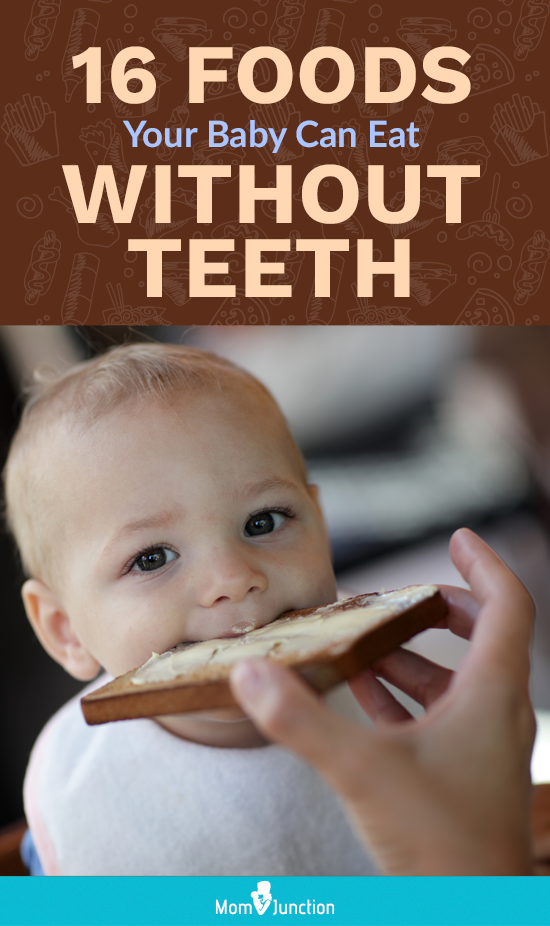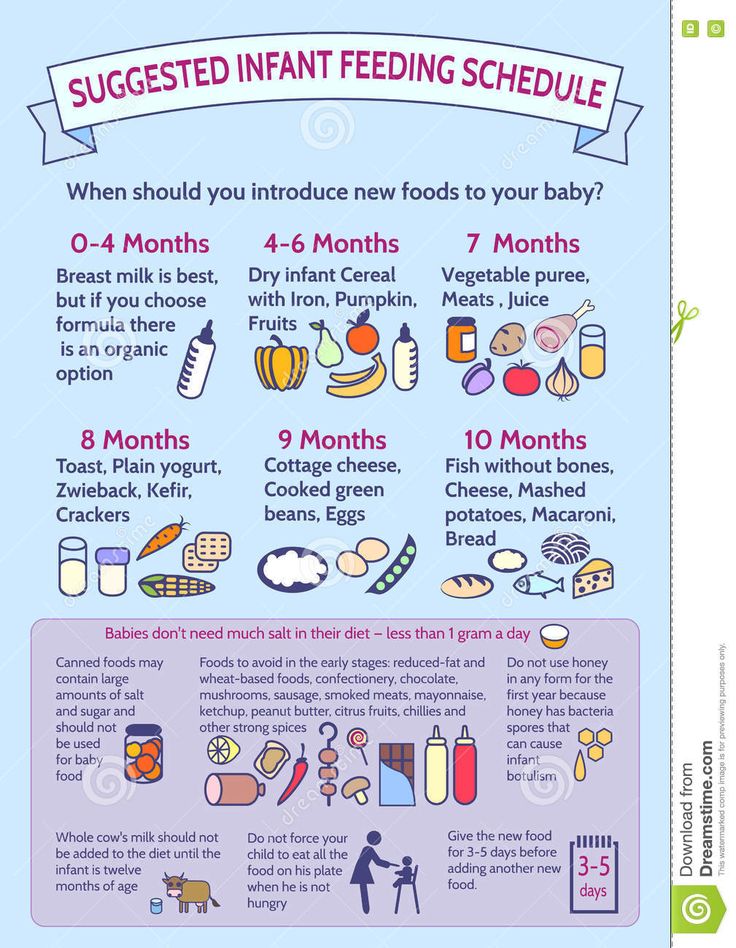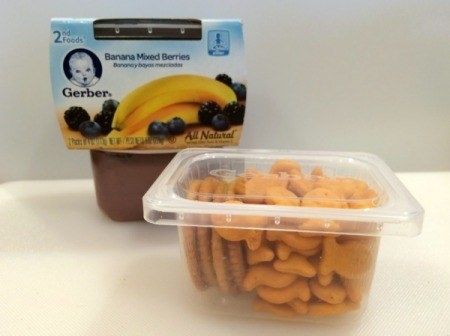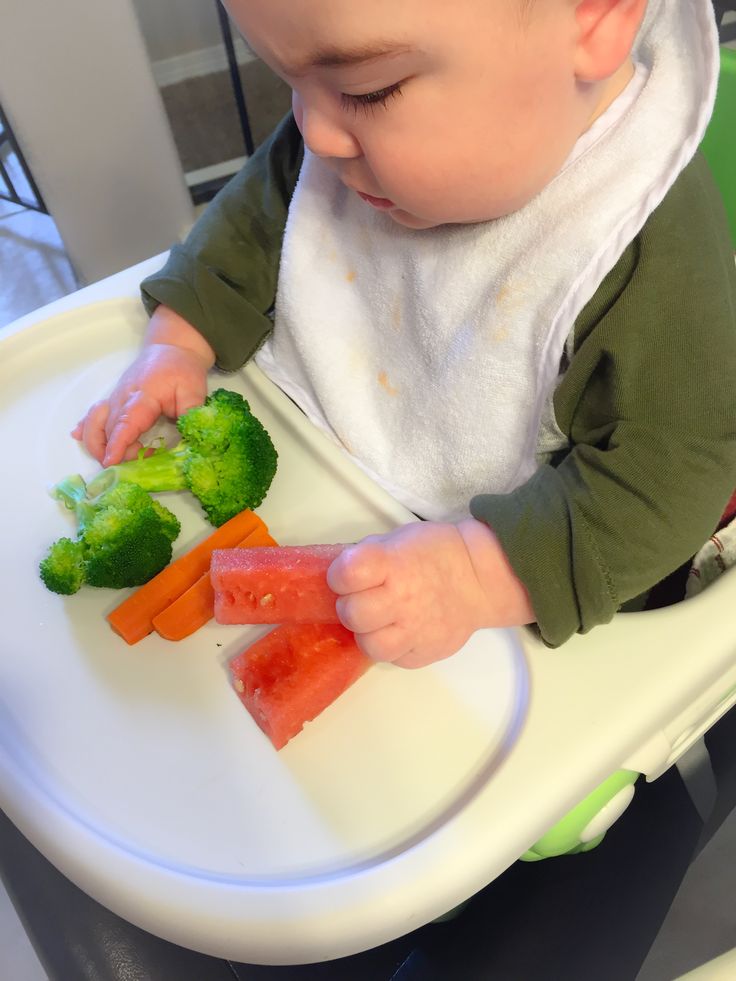When can you give your baby table food
When, What, and How to Introduce Solid Foods | Nutrition
For more information about how to know if your baby is ready to starting eating foods, what first foods to offer, and what to expect, watch these videos from 1,000 Days.
The Dietary Guidelines for Americans and the American Academy of Pediatrics recommend children be introduced to foods other than breast milk or infant formula when they are about 6 months old. Introducing foods before 4 months old is not recommended. Every child is different. How do you know if your child is ready for foods other than breast milk or infant formula? You can look for these signs that your child is developmentally ready.
Your child:
- Sits up alone or with support.
- Is able to control head and neck.
- Opens the mouth when food is offered.
- Swallows food rather than pushes it back out onto the chin.
- Brings objects to the mouth.
- Tries to grasp small objects, such as toys or food.
- Transfers food from the front to the back of the tongue to swallow.
What Foods Should I Introduce to My Child First?
The American Academy of Pediatrics says that for most children, you do not need to give foods in a certain order. Your child can begin eating solid foods at about 6 months old. By the time he or she is 7 or 8 months old, your child can eat a variety of foods from different food groups. These foods include infant cereals, meat or other proteins, fruits, vegetables, grains, yogurts and cheeses, and more.
If your child is eating infant cereals, it is important to offer a variety of fortifiedalert icon infant cereals such as oat, barley, and multi-grain instead of only rice cereal. Only providing infant rice cereal is not recommended by the Food and Drug Administration because there is a risk for children to be exposed to arsenic. Visit the U.S. Food & Drug Administrationexternal icon to learn more.
How Should I Introduce My Child to Foods?
Your child needs certain vitamins and minerals to grow healthy and strong.
Now that your child is starting to eat food, be sure to choose foods that give your child all the vitamins and minerals they need.
Click here to learn more about some of these vitamins & minerals.
Let your child try one single-ingredient food at a time at first. This helps you see if your child has any problems with that food, such as food allergies. Wait 3 to 5 days between each new food. Before you know it, your child will be on his or her way to eating and enjoying lots of new foods.
Introduce potentially allergenic foods when other foods are introduced.
Potentially allergenic foods include cow’s milk products, eggs, fish, shellfish, tree nuts, peanuts, wheat, soy, and sesame. Drinking cow’s milk or fortified soy beverages is not recommended until your child is older than 12 months, but other cow’s milk products, such as yogurt, can be introduced before 12 months. If your child has severe eczema and/or egg allergy, talk with your child’s doctor or nurse about when and how to safely introduce foods with peanuts.
How Should I Prepare Food for My Child to Eat?
At first, it’s easier for your child to eat foods that are mashed, pureed, or strained and very smooth in texture. It can take time for your child to adjust to new food textures. Your child might cough, gag, or spit up. As your baby’s oral skills develop, thicker and lumpier foods can be introduced.
Some foods are potential choking hazards, so it is important to feed your child foods that are the right texture for his or her development. To help prevent choking, prepare foods that can be easily dissolved with saliva and do not require chewing. Feed small portions and encourage your baby to eat slowly. Always watch your child while he or she is eating.
Here are some tips for preparing foods:
- Mix cereals and mashed cooked grains with breast milk, formula, or water to make it smooth and easy for your baby to swallow.
- Mash or puree vegetables, fruits and other foods until they are smooth.

- Hard fruits and vegetables, like apples and carrots, usually need to be cooked so they can be easily mashed or pureed.
- Cook food until it is soft enough to easily mash with a fork.
- Remove all fat, skin, and bones from poultry, meat, and fish, before cooking.
- Remove seeds and hard pits from fruit, and then cut the fruit into small pieces.
- Cut soft food into small pieces or thin slices.
- Cut cylindrical foods like hot dogs, sausage and string cheese into short thin strips instead of round pieces that could get stuck in the airway.
- Cut small spherical foods like grapes, cherries, berries and tomatoes into small pieces.
- Cook and finely grind or mash whole-grain kernels of wheat, barley, rice, and other grains.
Learn more about potential choking hazards and how to prevent your child from choking.
Top of Page
Feeding Your 8- to 12-Month-Old (for Parents)
By 8 months old, most babies are pros at handling the iron-fortified infant cereals and the puréed foods that are part of their diet, along with breast milk or formula.
Over the next few months, they will start to explore table foods.
Changing Eating Habits
Offer your baby a variety of tastes and textures from all food groups. Start any new food with a trial run (a few days to a week) to look for any allergic reactions. Babies younger than 12 months old should not have:
- honey until after a baby's first birthday. It can cause botulism in babies.
- unpasteurized juice, milk, yogurt, or cheese
- regular cow's milk or soy drinks before 12 months instead of breast milk or formula. It’s OK to offer pasteurized yogurt and cheese.
- foods that may cause choking, such as hot dogs, raw vegetables, grapes, hard cheese, popcorn, and nuts
- foods with added sugars and no-calorie sweeteners
- high-sodium foods
Babies this age are likely showing more interest in table foods. You can fork-mash, cut up, blend, or grind whatever foods the rest of the family eats. To prevent choking, cook table foods a little longer, until very soft, and cut or shred them into small pieces that your baby can handle safely.
To prevent choking, cook table foods a little longer, until very soft, and cut or shred them into small pieces that your baby can handle safely.
Around 9 months old, infant usually can pick food up between their finger and thumb so they can try feeding themselves.
If you haven't already, have your baby join the rest of the family at meals. They enjoy being at the table.
After the first birthday, babies are ready to switch to cow's milk. If you're breastfeeding, you can continue beyond 1 year, if desired. If you decide to stop breastfeeding before your baby's first birthday, give iron-fortified formula. If your baby is over 12 months, give whole milk.
Let your baby keep working on drinking from a cup, but do not give juice to infants younger than 12 months. After 12 months, you can serve whole milk in a cup, which will help with the move from the bottle.
Feeding Safety
Always supervise when your child is eating. Make sure your child sits up in a high chair or other safe place. Don't serve foods that your baby could choke on.
Don't serve foods that your baby could choke on.
If you're unsure about whether a finger food is safe, ask yourself:
- Does it melt in the mouth? Some dry cereals will melt in the mouth, and so will light and flaky crackers.
- Is it cooked enough so that it mashes easily? Well-cooked vegetables and fruits will mash easily. So will canned fruits and vegetables. (Choose canned foods that don't have added sugar or salt.)
- Is it naturally soft? Cottage cheese, shredded cheese, and small pieces of tofu are soft.
- Can it be gummed? Pieces of ripe banana and well-cooked pasta can be gummed.
Making Meals Work
Keep your baby's personality in mind when feeding your baby. A child who likes a lot of stimulation may enjoy it when you "play airplane" with the spoon to get the food into their mouth. But a more sensitive tot might need the focus kept on eating with few distractions.
If your baby rejects new tastes and textures, serve new foods in small portions and don’t give up. It can take 8-10 tries before a baby accepts a new food.
It can take 8-10 tries before a baby accepts a new food.
How Much Should My Baby Eat?
Infant formula and breast milk continue to provide important nutrients for growing infants. But babies will start to drink less as they learn to eat variety of solid foods.
Watch for signs that your child is hungry or full. Respond to these cues and let your child stop when full. A child who is full may suck with less enthusiasm, stop, or turn away from the breast or the bottle. With solid foods, they may turn away, refuse to open their mouth, or spit the food out.
Let your baby finger feed or hold a spoon while you do the actual feeding. This is good preparation for the toddler years, when kids take charge of feeding themselves. And if you haven't already, set regular meal and snack times.
What food to give a child to school and how to teach him to eat right
Komsomolskaya Pravda
and fashionable
Lunch in the school cafeteria.Photo: Oleg UKLADOV
Every fifth Russian child suffers from obesity. This figure has doubled over the past 15 years. And continues to grow.
This figure has doubled over the past 15 years. And continues to grow.
There are so many sugars, preservatives and other additives in today's products that one glance at the counter can lead to diabetes mixed with allergies. But if adults can still, reluctantly, turn away from a cake or walk past a pack of chips, then for a child this can be an overwhelming test. Especially if the school has a vending machine with harmful snacks, and in the dining room there is a choice between unleavened pasta and tasteless meatballs.
How to feed a child and how to teach him to eat properly, says Elena Pavlovskaya, Ph.D.
Cutting Carbohydrates
The main thing you need to teach your child (and get used to) is to plan your diet. Then there will be no bad snacks. It is more convenient to make such a menu for a week at once. And it is important to make it not only useful, but also diverse.
- Now we have a common carbohydrate model of behavior, - says Elena Pavlovskaya. - Foods that contain carbohydrates and fats, simple and tasty - they are at every turn. These are the same chips, crackers, fast food. This diet leads to obesity.
- Foods that contain carbohydrates and fats, simple and tasty - they are at every turn. These are the same chips, crackers, fast food. This diet leads to obesity.
You can't live without carbohydrates either - they are the main source of energy. Therefore, you need to choose something that has less fat and more nutrients.
Vegetables and fruits are very important for the body - the main source of fiber.
Examples of healthy carbohydrates:
- Whole grain bread
- Vegetables
- Porridges
Add proteins
In addition, it is necessary to include high-grade proteins in the diet - these are meat, eggs, fish, cottage cheese.
- Many children now have a protein deficiency, because they do not eat meat or cottage cheese, but sausages, sausages and curds, - says the expert. - This is not a complete replacement, these products have less protein and more carbohydrates and fats.
This does not mean that children should be fed solid steaks. But remembering the recipe for cheesecakes will not hurt.
But remembering the recipe for cheesecakes will not hurt.
Examples of useful proteins:
- chicken breast
- cottage cheese
- fish (preferably cold water: trout, tuna, salmon)
Fat can be useful
The body also needs fats - hormones are synthesized from them, they support the work of the cardiovascular system. So fat-free foods do not fit into the system of proper nutrition.
Examples of healthy fats:
- Fish oil - it is found in cold-water fish species
- Vegetable oils - for dressing salads and cooking .
Breakfast
Cooked breakfasts advertised on TV are not recommended for children. They have too much sugar and sweeteners. It is better to take ordinary porridge or cereal flakes and add fruits, nuts or honey to them.
- One spoonful of honey or condensed milk won't harm a child, - the expert believes. In general, breakfast is the most important meal of the day and should never be skipped. Let the child eat a sandwich with sausage (only boiled, not smoked) for breakfast than not eat at all.
Let the child eat a sandwich with sausage (only boiled, not smoked) for breakfast than not eat at all.
By the way, semolina, contrary to all stereotypes, is not the best option for breakfast. Compared to other cereals, it has few nutrients and nutrients.
- Semolina contains phytin, which hinders the absorption of calcium, - explains Elena Pavlovskaya. - Children whose parents feed solid semolina at the age of 1-2 years are more likely to suffer from rickets than those whose food is more varied.
Lunch
Now schoolchildren rarely have lunch at home. But the food from the school canteen, frankly, few people delight - even if it is varied and from normal products.
- Children's food is prepared according to certain standards, explains the nutritionist. - For our taste, it is too bland, because we oversalt our adult food too much. And children who are used to such food will not like school lunches.
In addition, school meals for children may be unusual. For example, if soups are not eaten at home or casseroles are not prepared, the child will refuse them in the dining room.
For example, if soups are not eaten at home or casseroles are not prepared, the child will refuse them in the dining room.
- In this case, it's better to assemble a lunchbox for the child, - says Pavlovskaya. - You can buy a beautiful box with thermal walls that will keep food hot. Even if it is not a full-fledged hot lunch, it is still healthy and safe food that the child will eat. And he won’t fill his stomach with chocolates and buns.
BTW
Ideas for a lunchbox can be found in the telegram channel "What to put in a lunchbox". It is led by Natalya Netrusova, teacher of the capital's Intellectual school. Every day she collects lunch boxes for herself and her child, shares recipes and filling options. Plus, importantly, it indicates the time spent preparing the lunchbox - it usually takes 10-15 minutes.
Dinner
The proverb about dinner, which must be given to the enemy, does not work on children. You can not leave a child without a full meal, even if he frankly does not hurt to lose weight.
- Adult dietary restrictions - diets and fasting - are absolutely not suitable for children! the nutritionist warns. - Children grow up, and their body constantly needs building materials for this. Even if the child is overweight, you must first examine the metabolism under the supervision of a doctor.
Another extreme is to feed children with vitamins and superfoods. The first can provoke an allergy. So first it is worth taking tests from a doctor, and then drinking precisely those vitamins that are not enough in the body. And superfoods (they include either ginger, then goji berries, then quinoa, then green coffee, and much more) do not undergo any clinical testing, therefore their benefits are doubtful.
THIS TIME
Why don't children eat enough?
Many parents complain that their children do not eat well - and you can't cram a spoonful of soup. Or they eat, but only one thing, for example, sausages or pizza. But after all, you can’t live on sausages alone either, and attempts to feed something else to a child turn into kitchen battles.
But after all, you can’t live on sausages alone either, and attempts to feed something else to a child turn into kitchen battles.
To avoid this, the World Health Organization recommends introducing complementary foods to babies as early as 4-5 months of age. At this age, children have a "window of tolerance" - they willingly try and accept different new tastes, and in the future they are happy to eat already familiar food. If the children did not try some products on time, these tastes later, at an older age, may seem unpleasant and unusual.
Age category of the site 18+
Online edition (website) registered by Roskomnadzor, certificate El No. FS77-80505 dated March 15, 2021
I.O. EDITOR-IN-CHIEF - NOSOVA OLESIA VYACHESLAVOVNA.
Messages and comments from site readers are posted without preliminary editing. The editors reserve the right to remove them from the site or edit them if the specified messages and comments are an abuse of freedom mass media or violation of other requirements of the law.
JSC "Publishing House "Komsomolskaya Pravda". TIN: 7714037217 PSRN: 1027739295781 127015, Moscow, Novodmitrovskaya d. 2B, Tel. +7 (495) 777-02-82.
Exclusive rights to materials posted on the website www.kp.ru, in accordance with the legislation of the Russian Federation for the Protection of the Results of Intellectual Activity belong to JSC Publishing House Komsomolskaya Pravda, and do not be used by others in any way form without the written permission of the copyright holder.
Acquisition of copyright and contact with the editors: [email protected]
How to feed a child who does not eat in the school canteen
Mama.ru test
Thermoses " Arktika " for school breakfasts arrived at the Mama.ru office. And we decided that this is an excellent occasion to talk about organizing school meals. In two weeks, the new school year will begin, and during big breaks, children will go to the canteen for breakfast and lunch.
 We tell what to do for those who do not like catering may eat in the canteen due to gastrointestinal illness or for any other reason.
We tell what to do for those who do not like catering may eat in the canteen due to gastrointestinal illness or for any other reason. Nutrition in schools is regulated by SanPiN 2.4.5.2409-08 with the long title "Sanitary and epidemiological requirements for the organization of nutrition for students in general education institutions, institutions of primary and secondary vocational education", and this means that food in the school canteen must be guaranteed of good quality and safe preparation. But keeping food according to the rules and observing the standards of cooking does not mean cooking deliciously. School food is usually unappetizing, and, according to some students, completely inedible. What should parents do if their children refuse school porridge for breakfast, move away a plate of undersalted soup and dejectedly pick a cold cutlet for lunch?
First of all, understand that even the law "On Education" does not provide for compulsory paid meals in the school canteen. The child must eat properly and varied, must receive all the necessary vitamins and good food, but this does not mean that parents should pay the school. Not a single legal act contains norms that oblige parents to choose a school diet, no matter what representatives of the school administration say.
The child must eat properly and varied, must receive all the necessary vitamins and good food, but this does not mean that parents should pay the school. Not a single legal act contains norms that oblige parents to choose a school diet, no matter what representatives of the school administration say.
It is also illegal to require a doctor's certificate stating that the child has any illness that prevents him from eating at school. Even a simple childish “it doesn’t taste good to me” is already a reason to think about alternative nutrition, because a student will simply put aside the plate without touching the food and remain hungry all day. From 8:30 am to 3-4, and in some cases even 5-6 pm.
Secondly, parents should assess their strength in advance and understand whether they are ready to provide their child with a full-fledged alternative to school meals every day. Get up an hour or two earlier, prepare breakfast and lunch, and pack them in safe, light, and handy containers. Make sure that the child's diet always contains vegetables, fruits, compotes. So that food can be easily taken out and eaten, so that it does not crumble, does not smell too strong. So that breakfast and lunch can truly replenish energy during the day, which means they would contain proteins, carbohydrates and fiber.
Make sure that the child's diet always contains vegetables, fruits, compotes. So that food can be easily taken out and eaten, so that it does not crumble, does not smell too strong. So that breakfast and lunch can truly replenish energy during the day, which means they would contain proteins, carbohydrates and fiber.
If the family is ready for such difficulties, it remains to choose convenient dishes and look at recipes for home-cooked school breakfasts and lunches.
While a plastic lunch box with several compartments may be suitable for a light snack, parents should purchase thermoses for hot meals. The smaller the thermos, the easier it will be for the child to carry it in a lunch bag. Ideally, a thermos for an elementary school student should not be more than 300-400 ml. For hot drinks, you need a container with a narrow neck, and for second courses - with a wide one.
art. 411-280
Just such a thermos with a wide mouth of 280 ml. Suitable for children who are used to eating homemade porridge for breakfast. Good for lunches and for taking food with you to the sports section or to the pool, where the children always go hungry. Suitable mainly for elementary students. For older students, the portion size should be larger. Keeps warm from 3 to 6 hours. If mom puts in a freshly cooked lunch in the morning, the food in the thermos will be the right temperature by the big school break.
Good for lunches and for taking food with you to the sports section or to the pool, where the children always go hungry. Suitable mainly for elementary students. For older students, the portion size should be larger. Keeps warm from 3 to 6 hours. If mom puts in a freshly cooked lunch in the morning, the food in the thermos will be the right temperature by the big school break.
art. 411-400
This model of the Mama.ru editors seemed less successful than the previous one: despite the declared wide neck, this 400-ml thermos is rather elongated and narrow. It is quite difficult to eat anything from it and not get your hands dirty, especially for students in grades 1-4. This option is suitable for bringing soup to school and pouring it into a bowl. But let's say from experience that homemade soup at school is not the right decision.
art. 102-350
Miniature thermos for tea, compote and any other drinks. It makes sense to purchase such a container even for those who are not going to heroically feed their children at school with homemade food.











